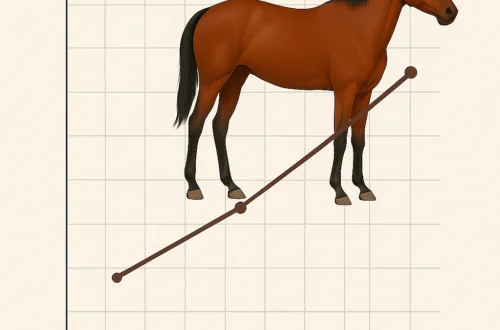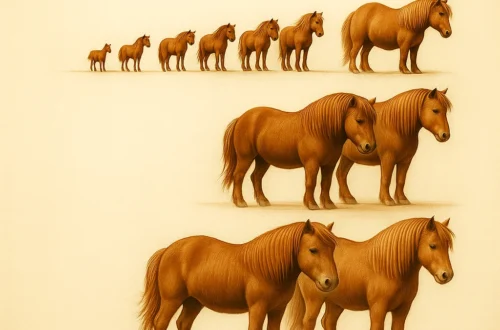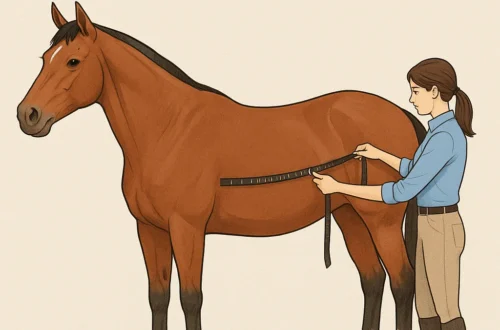So, what is the ideal andalusian horse weight? It’s usually between 900 and 1,200 pounds (about 408–544 kg). Stallions and geldings tend to be heavier, around 1,100 to 1,300 pounds, while mares stay near 900 to 1,100 pounds. Because Andalusians are “easy keepers,” owners should watch their horse’s weight. Too much fat can cause health problems like Equine Metabolic Syndrome.
The guide explains how to use the Body Condition Score (BCS) to track fat, feed a low-sugar diet, and plan regular exercise. It also covers weight management for foals, adults, and senior horses, plus safe weight-carrying limits. With advice from horse expert Hendrix Quincy, readers will learn how to maintain a fit, strong, and happy Andalusian at every stage of life.
Ideal Andalusian Weight by Height and Sex (The “Hands” Factor)

Andalusian horses show clear height and weight differences between males and females. Stallions and geldings are usually taller and heavier than mares. The table below shows the common height and weight ranges for each sex, based on breed information.
| Sex | Average Height (Hands) | Average Height (cm) | Average Weight (kg) | Average Weight (lbs) | Typical Range (Hands) | Typical Range (kg) |
| Stallions & Geldings | 15.121 hands | 156 cm | 512 kg | 1,129 lbs | 15.0−16.2 hands | 500−590 kg |
| Mares | 1521 hands | 154 cm | 412 kg | 908 lbs | 14.3−16.2 hands | 410−545 kg |
Note on Hands: A hand is a unit used to measure a horse’s height. One hand equals 4 inches (10.16 cm). The height is measured from the ground up to the highest point of the withers, which is the ridge between the horse’s shoulders.
Key Registration Requirements (Spain):
- Stallions: For registration, stallions must be at least 15.0 hands tall (152 cm).
- Mares: For registration, mares must be at least 14.3 hands tall (150 cm).
Andalusian Horse Weight Chart: Conversions at a Glance
| Category | Kilograms (kg) | Pounds (lbs) | Stones (st) |
| Typical Weight Range | 408−590 kg | 900−1,300 lbs | 64.3−92.9 st |
| Average for Stallions/Geldings | ≈512 kg | ≈1,129 lbs | ≈80.6 st |
| Average for Mares | ≈412 kg | ≈908 lbs | ≈64.9 st |
Key Weight Notes:
- Gender Difference: Stallions and geldings (male horses) are usually bigger and heavier than mares.
- Conversion Factor: To convert pounds to stones, use the rule that 1 stone equals 14 pounds.
- Health & Condition: A horse’s weight can change depending on its health, body shape, muscles, and diet. Always ask a vet for the best advice on your horse’s ideal weight.
Using the Body Condition Score (BCS): The Complete Assessment

The usual way to check a horse’s weight is the Body Condition Score (BCS). It works for all horses, even “easy keepers” like Andalusians. BCS measures how much fat a horse has. The most common system is the Henneke method. It uses a scale from 1 (very thin) to 9 (very fat).
Here is a step-by-step guide to do a BCS on your Andalusian.
1. The Ideal BCS for an Andalusian
For most horses, a Body Condition Score (BCS) of 5 is ideal. However, “easy keeper” breeds like Andalusians tend to gain fat more easily. This makes them more likely to develop health problems such as Equine Metabolic Syndrome (EMS) and laminitis. For Andalusians, it’s best to keep their BCS between 5 and 6. Some studies suggest that overweight and obese scores may be higher for this breed, like 7.5 for overweight and 8.5 for obese. Still, keeping your Andalusian at a steady score of 5 or 6 is the safest and healthiest option.
2. How to Perform a Body Condition Score
The Body Condition Score (BCS) system uses both looking and feeling to check a horse’s fat levels. You assess six main areas of the horse’s body. Feeling, or palpation, is very important for breeds like the Andalusian. Their thick coats and round body shape can hide extra fat, making it harder to judge by sight alone.
The 6 Key Areas to Evaluate
| Area | What to Look/Feel For |
| 1. Neck/Crest | Gently feel along the top of the horse’s neck, called the crest. Check if there is a firm or hard fat layer under your hand. A thick or “cresty” neck is a clear sign that the horse has extra fat and may be at risk for health problems, especially in easy keeper breeds. |
| 2. Withers | Feel both sides of the withers for any fat buildup. If the area feels soft or padded instead of bony, it means fat has collected there. |
| 3. Loin/Back | Check the horse’s back, especially the loin area. Look for a line or crease running down the middle. If you see or feel a groove there, it means the horse has too much fat. |
| 4. Ribs | Press firmly on the horse’s ribcage. You should be able to feel the ribs without seeing them clearly. If you can’t feel them without pressing hard, your horse’s BCS is likely 7 or higher, meaning it’s overweight. |
| 5. Tailhead | Feel the area around the base of the tail, called the tailhead. If the fat there feels soft or spongy and you can’t easily feel the tail bones, your horse has extra fat. Bulging or uneven fat in this area is a sign of obesity. |
| 6. Behind the Shoulder | Feel the area just behind the horse’s shoulder. In overweight horses, this spot may feel filled in or level with the shoulder. Sometimes, a visible “shelf” of fat can form there, showing the horse has extra weight. |
General BCS Descriptions (Henneke 1-9 Scale)
| Score | Condition | Visual & Palpation Indicators |
| 1-3 | Underweight (Poor to Thin) | The ribs, spine, hips, and tailhead are easy to see. There is no fat that can be felt anywhere on the body. The horse looks bony and lacks muscle or fat cover. |
| 4 | Moderately Thin | You can see a faint outline of the ribs. The neck, withers, and shoulders don’t look too thin. Some fat can be felt around the tailhead, but the horse still appears slightly lean. |
| 5 | Moderate (Ideal) | The back is flat and level. The ribs can’t be seen but are easy to feel with light pressure. The fat around the tailhead feels soft and spongy. The neck and shoulders blend smoothly into the body, giving a balanced look. |
| 6 | Moderately Fleshy | There may be a slight crease or dip down the back. You can still feel the ribs, but they’re covered with soft, spongy fat. Fat also starts to build up along the neck and behind the shoulders. |
| 7 | Fleshy (Overweight) | There may be a clear crease down the back. The ribs are hard to feel because of fat covering them. Fat deposits are easy to see along the neck, withers, and behind the shoulders. |
| 8-9 | Obese (Fat to Extremely Fat) | There is a deep crease down the back. The ribs are very hard or impossible to feel. Fat bulges and looks uneven around the tailhead, withers, and behind the shoulders. The neck is thick and bulging, showing a clear “cresty” shape. |
Final Step: Calculate the Average
- Give each of the six body areas a score from 1 to 9.
- Add all six scores together.
- Then divide the total by 6 to find your horse’s overall Body Condition Score (BCS).
Example:
If your horse scores 5 on the ribs, 6 on the neck crest, and 5 on the other four areas:
(5 + 6 + 5 + 5 + 5 + 5) ÷ 6 = 31 ÷ 6 ≈ 5.2
Your horse’s BCS is about 5.2, which means it’s in Moderate condition.
Monitoring an Andalusian (The “Easy Keeper”)
Andalusians tend to gain fat easily, so regular checks are very important.
Frequency: Check your horse’s Body Condition Score (BCS) every 4 to 6 weeks and write down the results.
Cresty Neck Score (CNS): Because fat around the neck is linked to health problems, also check the Cresty Neck Score. This uses a 0–5 scale. A thick or hard crest is a warning sign of possible metabolic issues.
Weight Tape: Use a horse weight tape to estimate body weight along with BCS. Always measure at the same time of day, with the same tape and person, to keep results consistent.
Consult a Professional: Since Andalusians can develop metabolic diseases, ask your vet or an equine nutritionist to check your horse’s BCS. They can help you set a healthy target score based on your horse’s age, activity level, and overall health.
Andalusian BCS Warning Signs: Identifying Metabolic Risk (BCS 7+)
To know if your Andalusian is overweight, use the Henneke Body Condition Scoring (BCS) System, which rates from 1 to 9. For this breed, even a score of 7 or higher is a serious warning. It means your horse may be at risk for Equine Metabolic Syndrome (EMS) and laminitis.
The healthy BCS range for an Andalusian is between 5 and 6. Pay close attention to the areas where this breed tends to store fat, called regional adiposity. These spots show the earliest and most important signs of weight problems.
| Area of Assessment | Ideal Condition (BCS 5) | Danger Zone (BCS ≥7) | Metabolic Risk Indicator |
| 1. The Neck Crest | The neck crest feels soft and blends smoothly into the shoulder. No hard ridge can be felt. | The crest feels thick and hard, like a solid ridge or board. A crease or “gutter” may be seen on top. | A hard, thick crest is the clearest sign of insulin problems. A diet change is needed right away. |
| 2. The Ribs | The ribs can be felt easily with light pressure but are not visible. | The ribs are hard to feel because of a thick, soft fat layer. | Shows general obesity and extra stored fat, which stresses joints and organs. |
| 3. Behind the Shoulder | The area blends smoothly into the body. | Bulging or thick fat pads are easy to see behind the shoulders. | These fat pads limit movement and show the horse has more energy stored than needed. |
| 4. The Loin/Back | The back is flat with no ridge or crease. | A deep crease or “gutter” runs down the spine because of bulging fat on both sides. | This shows heavy fat buildup in the core. With a cresty neck, EMS risk is very high. |
| 5. The Tailhead | Fat around the tailhead feels soft and smooth with the body. | The area feels puffy and bulges around the base of the tail. | A main fat storage spot that often shows insulin resistance. |
Immediate Action Threshold:If your Andalusian has a hard, thick neck crest or a Body Condition Score (BCS) of 7 or higher, treat it as a possible case of Equine Metabolic Syndrome (EMS). Your horse should be checked by a vet and tested, such as with an oral glucose challenge test, to confirm its condition.
The “Easy Keeper” Challenge: Why Andalusians Gain Weight
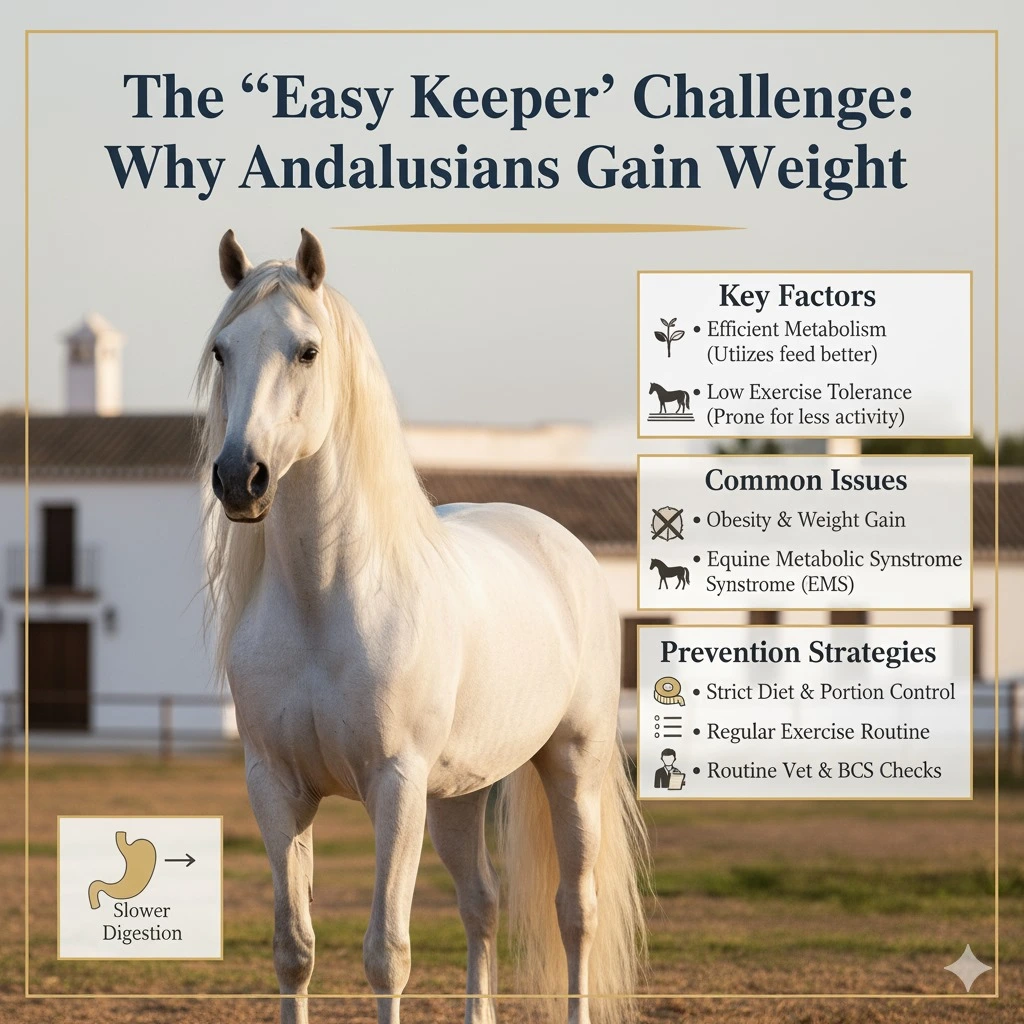
The Andalusian horse, also known as the Purebred Spanish Horse (PRE), is loved around the world for its beauty, smooth movement, and calm nature. However, these fine traits come with a hidden challenge called Easy Keeper Syndrome.
Andalusians gain weight easily because of their genetics. Their bodies are very good at saving energy, which helped their ancestors survive on limited food. But in modern care, this same trait makes them prone to gaining too much fat and developing metabolic problems.
1. Genetic Adaptation: The “Thrifty Gene”
The main reason Andalusians are called “easy keepers” comes from their genetics, often known as the thrifty gene.
- Survival Mechanism: Long ago, Andalusians lived in areas where food was poor and hard to find. Horses with the thrifty gene survived better because their bodies learned to use every bit of food and store extra energy as fat.
- Modern Implication: Today, Andalusians usually have plenty of hay and grain. Their efficient bodies still store extra calories as fat, even when food is not scarce. Their metabolism is built for survival in famine, not for the constant food supply of modern care.
2. Hormonal and Metabolic Dysregulation
The “easy keeper” trait also increases the risk of Equine Metabolic Syndrome (EMS).
- Insulin Dysregulation (ID): The main feature of EMS is insulin problems. Normally, when a horse eats carbs (sugars and starches), the pancreas releases insulin to move sugar from the blood into the cells. In Andalusians with ID, the cells resist insulin. This forces the pancreas to release too much insulin, a condition called hyperinsulinemia.
- Increased Laminitis Risk: High insulin levels over time can cause laminitis, a painful hoof condition. This makes controlling diet and weight critical for the horse’s health, not just its appearance.
3. The Pattern of Fat Storage (Regional Adiposity)
Andalusians don’t gain fat evenly like some other breeds. Instead, they store fat in certain key areas, even if their overall Body Condition Score (BCS) looks moderate.
- Cresty Neck: The most common sign of metabolic stress in Andalusians is a thick, hard fat deposit along the top of the neck, called a cresty neck.
- Active Hormones: Fat in the neck and tailhead is not just stored energy. It produces hormones called adipokines that increase inflammation and worsen insulin resistance. This creates a harmful cycle of obesity and higher risk for metabolic disease.
4. Conformation and Exercise Misconceptions
The Andalusian’s strong, compact build can hide weight gain, making it easy for owners to overfeed or under-exercise them.
- Visual Deception: Their naturally thick neck and shoulders may look like muscle, but a hard, fat crest is actually fat, not good conformation. This is a warning sign of metabolic problems.
- Lower Energy Needs: Many Andalusians are used for light or moderate work, like pleasure riding or dressage. Their efficient metabolism means they need fewer calories than a Warmblood or Thoroughbred doing the same work. Extra feed is quickly stored as fat, so careful portion control is important.
In short, Andalusians struggle with weight because of their own efficient genetics. Managing them means thinking of them as a metabolic-risk breed first and an easy keeper second. They need a lifelong plan of low-sugar (low-NSC) feed and regular exercise to stay healthy.
Weight Management Across the Andalusian Lifespan (The “Age” Factor)
Weight management for an Andalusian horse (Purebred Spanish Horse, PRE) is a careful balancing act. The main goal is to control its easy keeper genetics to prevent obesity and metabolic problems. Nutrition and care need to change as the horse ages from supporting the fast growth of a foal to adjusting for lower metabolism in a senior horse.
Foal and Growing Andalusian (0 to 3 Years)
The main goal for foals is steady, moderate growth to build strong bones and joints. This helps prevent Developmental Orthopedic Diseases (DODs).
- Prevent Rapid Weight Gain: Andalusian foals can gain fat too quickly, which stresses their growing bodies. Instead of focusing only on weight, check their Body Condition Score (BCS) regularly. You should be able to feel the ribs easily but not see them.
- Targeted Nutrition: Feed high-quality forage, like hay and pasture. During growth, add a ration balancer or specialized growth feed. This gives enough protein, calcium, and phosphorus for bones without too much starch or extra calories that cause fat gain.
- Foal Growth Charts: While specific Andalusian foal charts are rare, foals usually reach about 45% of mature weight by 6 months and 90% by 24 months. Use a weight tape monthly to track steady growth.
Adult Andalusian (4 Years to Mid-Teens)
For adult Andalusians, the main challenge is managing the risk of Equine Metabolic Syndrome (EMS) and laminitis, which this breed is prone to.
- Maintain a Moderate BCS: Aim for a Body Condition Score of 5 or 6. Avoid visible fat, especially a cresty neck, which signals insulin problems linked to EMS.
- Low-Starch, Low-Sugar Diet: Feed low NSC (Non-Structural Carbohydrate) forage. Test hay to keep NSC below 10%, or soak it in water for 30–60 minutes to remove sugars.
- Forage Restriction: As easy keepers, free-choice hay may cause weight gain. Limit hay to about 1.5–2% of body weight daily and use slow-feeder nets to extend chewing and satisfy grazing instincts.
- Mares During Reproduction: Pregnancy and lactation need more calories. Pregnant mares gain most weight in the last three months and need extra protein and nutrients. Lactating mares need even more energy and protein to stay in good condition while nursing.
Senior Andalusian (Late Teens and Older)
In senior years, weight management often focuses on preventing weight loss rather than gain, because older horses have age-related changes.
- Identify the Cause of Weight Loss: Always consult a vet for a full checkup. This should include a dental exam (a common cause of weight loss) and blood tests for conditions like PPID (Cushing’s Disease).
- Managing Dental Issues: If the horse struggles to chew hay and leaves “quids” of uneaten pieces, switch to soaked, easily digestible fiber. Options include senior feeds, soaked hay pellets, or hay cubes instead of long-stem hay.
- Calorie Density: To help your horse gain weight safely, add calorie-dense sources like fat for example, vegetable oil or stabilized rice bran. Fat gives energy without extra starch.
- Metabolic Management: If your senior is still an easy keeper or has EMS or PPID, continue low-NSC hay and feed routines to reduce the risk of laminitis, which can be very serious in older horses.
Managing the Easy Keeper: Exercise and Workload Strategies
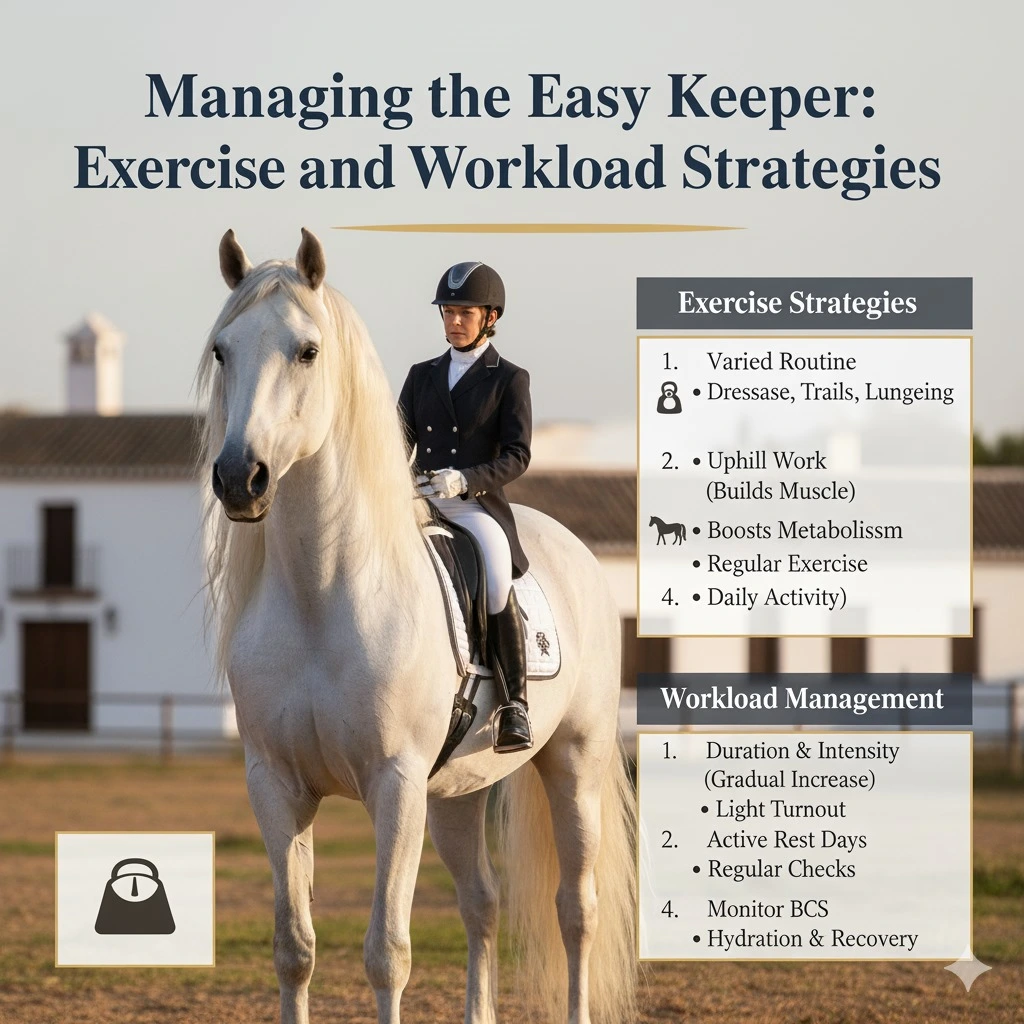
For Andalusians, exercise isn’t just for performance. It’s vital for metabolic health. Regular activity helps balance their thrifty genetics, improves insulin sensitivity, and uses stored fat for energy.
Here are the main strategies for managing exercise effectively in Andalusians:
1. Prioritize Consistency Over Intensity
To manage weight and insulin resistance, it’s better to do daily, steady, low-to-moderate intensity exercise rather than occasional intense workouts.
| Workload Focus | Goal for Metabolic Health |
| Duration | At least 30 minutes of continuous movement per session, 5–7 days a week. |
| Intensity (Aerobic) | Keep a trot or canter pace that raises the heart rate but allows easy breathing. Helps burn fat and improve fitness. |
| Warm-up/Cool-down | Essential for joint health and to let the metabolism gradually start and finish. |
2. Focus on Muscle Development (Topline)
A strong topline (back, loin, and hindquarters) improves posture, reduces back soreness under saddle, and raises the horse’s basal metabolic rate (BMR), since muscle burns more calories than fat.
- Collection and Engagement: Work the horse in a proper frame to engage the hindquarters and lift the back. This is key for Dressage and muscle development.
- Long-and-Low Work: Balance collected work with periods of “long and low” exercises to stretch the back muscles and keep them flexible.
- Transitions: Frequent, clean transitions between gaits (walk–trot, trot–canter, etc.) strengthen the core and improve responsiveness.
3. Incorporate Non-Ridden Work
Changing the exercise routine keeps the horse mentally engaged and works different muscle groups.
- In-Hand/Ground Work: Andalusians excel at in-hand work. It helps teach collection, correct bending, and engagement without the rider’s weight.
- Lunging/Long-Lining: Use long-lining to encourage forward, balanced movement. Avoid tight circles, which can stress joints. Use the full arena or round pen instead.
- Hill Work: Walking and trotting up hills builds power, stamina, and hindquarter muscles in a low-impact way.
4. Maximizing Movement During Turnout
Even fit Andalusians can gain fat if they stay still too long. Turnout should promote regular movement.
- Paddock Paradise/Track Systems: Fencing can create a track around a field, making the horse walk more between hay, water, and shelter.
- Slow Feeders: Use hay nets with small holes or slow-feeder systems placed far apart. This extends feeding time and encourages movement between meals.
- Minimize Stalls: Stalls restrict movement, which is bad for easy keepers with metabolic risk. Give as much turnout as possible, even in a dry lot or track system with limited access to rich grass.
By combining consistent exercise with a low-NSC diet, you help manage the Andalusian’s metabolism, support healthy weight, and reduce the risk of serious disease.
Rider Weight Capacity: How Much Can an Andalusian Carry?
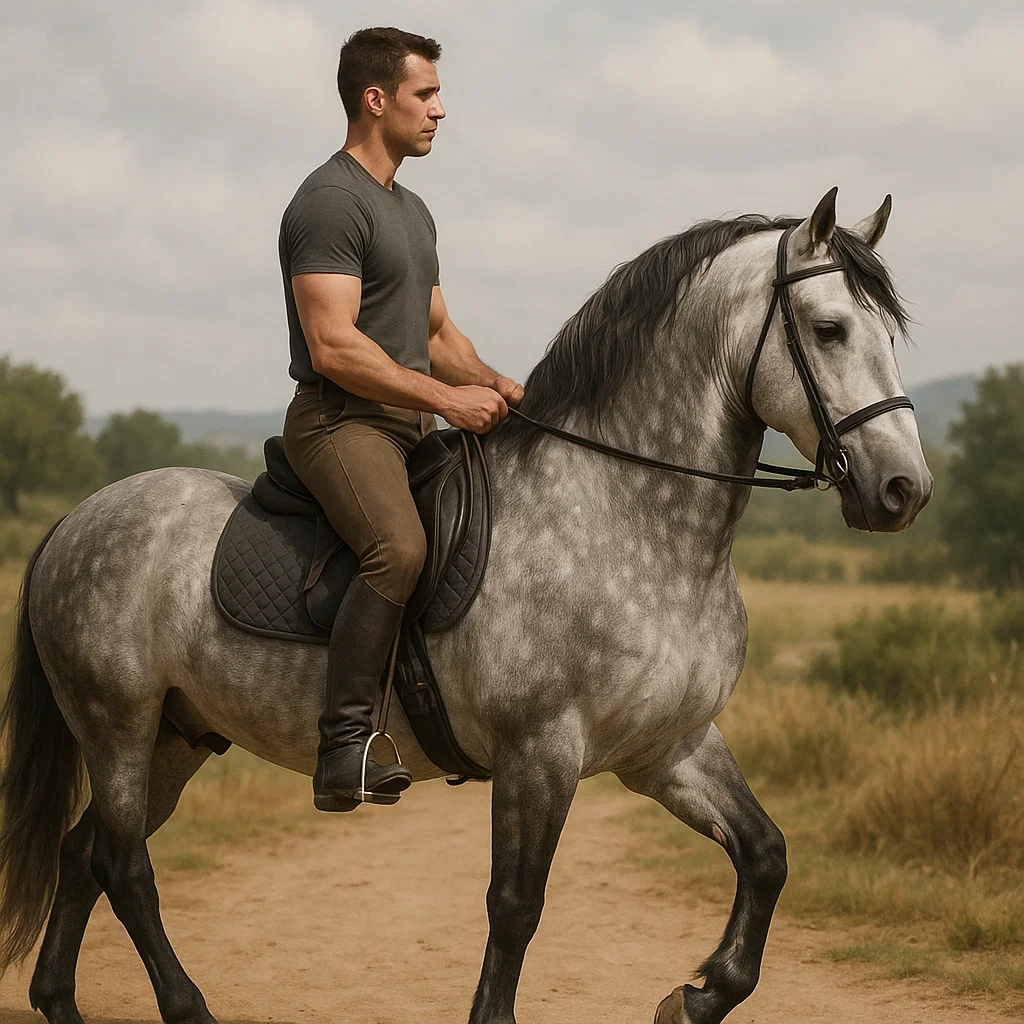
The Andalusian horse, also called the Purebred Spanish Horse (PRE), is known for its compact, powerful build and short back, which allows it to carry more weight than lighter breeds like Arabians or Thoroughbreds.
To determine how much weight an Andalusian can carry, use the Horse-to-Load Ratio. Be sure to consider the horse’s individual fitness and health when calculating limits.
The General Guideline: The 20% Rule
The standard guideline for a horse’s carrying capacity is up to 20% of its healthy body weight, including rider, saddle, and tack.
For an Andalusian:
- Average Weight: 900–1,300 lbs (410–590 kg)
- Recommended Load (15%): Ideal for comfort and long-term soundness.
- Maximum Load (20%): Absolute upper limit, suitable only for light to moderate work.
| Andalusian Weight (Ideal BCS 5) | Max Recommended Load (15%) | Absolute Max Load (20%) |
| 1,000 lbs (454 kg) | 150 lbs (68 kg) | 200 lbs (91 kg) |
| 1,200 lbs (544 kg) | 180 lbs (82 kg) | 240 lbs (109 kg) |
Note on Tack Weight: Remember to subtract the weight of the saddle and tack (usually 20–40 lbs for English or Dressage) from the total load. This will give the maximum rider weight your Andalusian can safely carry.
Andalusian-Specific Conformation Factors
The Andalusian’s body is naturally good at carrying weight, but this advantage only works if the horse is fit and healthy.
| Conformation Advantage | Weight-Carrying Implication |
| Short-Coupled Back | A short back is stronger and can support weight better than a long back, reducing the risk of soreness. |
| Broad Loin/Hindquarters | Wide loins and strong hindquarters spread the rider’s weight efficiently. The natural balance helps with collection and movement under a heavier rider. |
| Thick Bone Structure | Andalusians have dense bones, giving joints and limbs extra strength to carry weight safely. |
The Critical Caveat: The Overweight Andalusian
The biggest issue for Andalusians carrying weight is their metabolic risk, which changes how the 20% rule is applied.
- Base on Ideal Weight: Always calculate carrying capacity using the horse’s healthy weight (BCS 5–6), not its current overweight weight.
- Overweight ≠ Stronger: A fat Andalusian (BCS 7+) is less fit, with lower cardiovascular ability and extra inflammatory fat. Carrying heavy loads while obese strains joints, hooves (increasing laminitis risk), and muscles.
- Rider Fitness and Balance: A heavy or unbalanced rider puts more stress on the horse than a lighter, balanced rider. In high-level Dressage, a rider’s ability to sit quietly and evenly is as important as their weight.
Actionable Takeaways
- Weigh Everything: Know your horse’s weight using a weight tape or scale, and calculate the total load including rider and tack.
- Aim for 15%: Keep the total load under 15% of the horse’s healthy body weight for long-term soundness, especially during intense work like advanced collection.
- Prioritize Fitness: If approaching the 20% limit, ensure the horse is well-conditioned, has a strong topline, and is at an ideal BCS of 5 or 6.
Frequently Asked Questions
What is the ideal weight range for an Andalusian horse?
The average Andalusian weighs between 900 and 1,300 lbs (410–590 kg), depending on age, sex, and height.
What is the best Body Condition Score (BCS) for an Andalusian?
The ideal BCS is 5–6, showing a healthy, fit horse without extra fat.
Why are Andalusian horses called “easy keepers?”
Andalusians gain weight easily because of their thrifty genetics, which make them very good at storing energy. This also puts them at higher risk for metabolic problems.
How much weight can an Andalusian horse safely carry?
The recommended load is 15% of the horse’s healthy body weight, while the maximum safe limit is 20%, including rider, saddle, and tack.
What is a “cresty neck,” and why is it dangerous for this breed?
A cresty neck is a thick, hard fat deposit along the top of the neck. It is a warning sign of insulin problems and increases the risk of EMS and laminitis.




